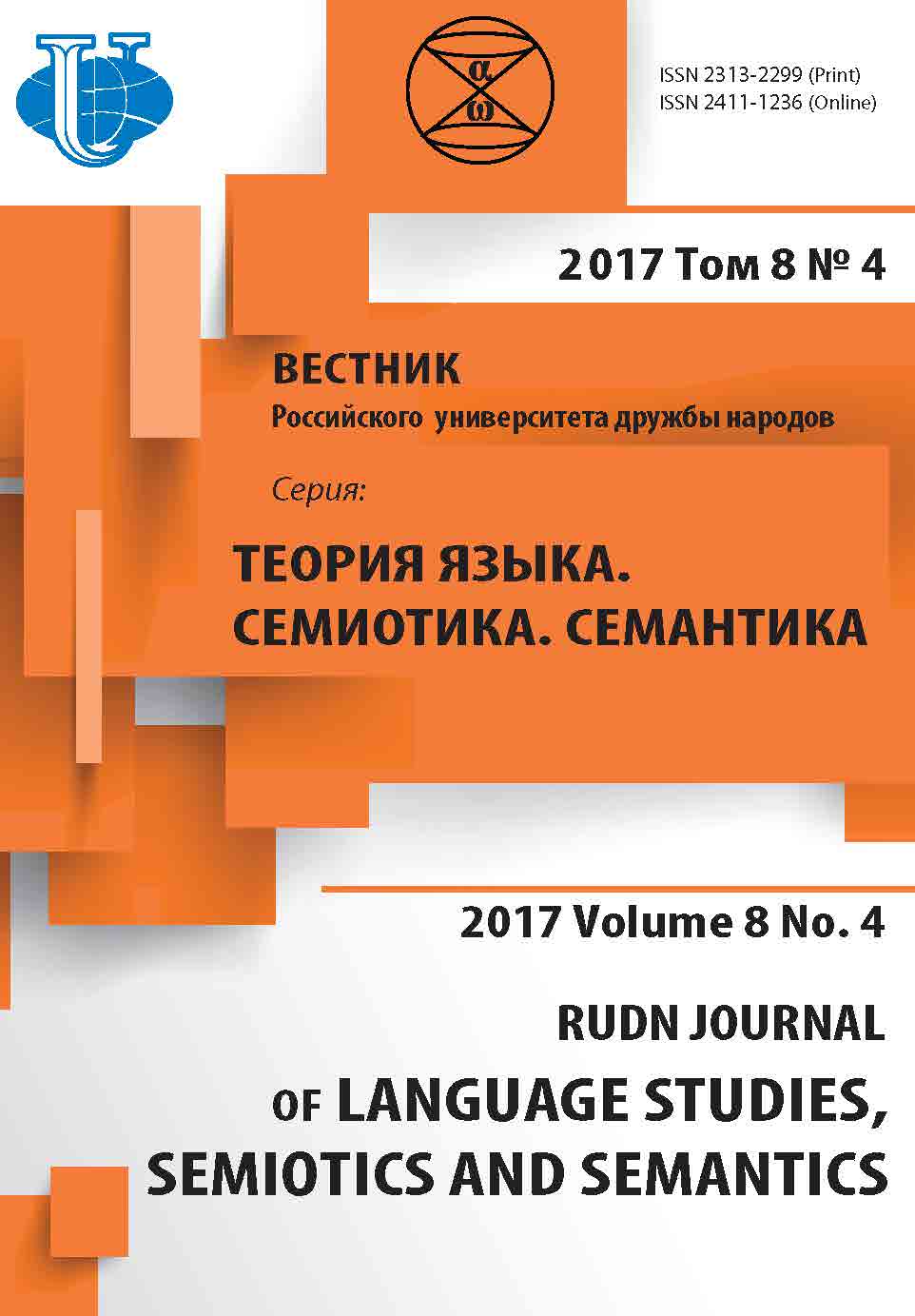COMPARATIVE COGNITIVE ANALYSIS OF LEXICAL GROUPS AND SEMANTIC FIELDS OF THE VERBS DENOTING THE NOTIONS “OPEN” AND “HIDE” IN ENGLISH, ARMENIAN AND RUSSIAN LANGUAGES
- Authors: Baghdasaryan V.F1
-
Affiliations:
- Yerevan Brusov State University of Languages and Social Sciences
- Issue: Vol 8, No 4 (2017)
- Pages: 957-962
- Section: Articles
- URL: https://journals.rudn.ru/semiotics-semantics/article/view/17974
- DOI: https://doi.org/10.22363/2313-2299-2017-8-4-957-962
Cite item
Full Text
Abstract
The relevance of this study is due to the fact that in modern scientific research there is a change in scientific paradigms in the study of language as a poly-paradigmatic system. Thus, the per-ception of a particular word is considered through apprehending the concept behind the verbal code. Within this framework, both the perceptual experience and the previously formed body of knowledge on a sign operate. Verbs denoting the notions “open” and “hide” are studied to reconstruct an integral picture of these processes. The author identified and analyzed the lexical groups and semantic fields in the three lan-guages under the study, and identified the common and distinctive features of the semantic prototypes of the lexico-semantic groups. The data is collected from modern dictionaries and national corpuses. The findings of the cognitive linguistic analysis using the contrastive systems in three related languages allow to reconstruct an integral linguistic picture in studying the notions “open” and “hide”. The study combined the content elements revealed during the processing of the findings of the free associative experiment with the cognitive linguistic analysis of the lexico-semantic groups under the study. The verbs in the lexico-semantic group under the study reflect the features of the national linguistic and cognitive worldview and identify a number of semantic features that make it possible to obtain their comprehensive picture. The research findings allow reconstructing mental representations and stereotyped associations, and re-flecting on broad cultural processes in the history of these three nations.
About the authors
Vardanush F Baghdasaryan
Yerevan Brusov State University of Languages and Social Sciences
Author for correspondence.
Email: vardibaghdasaryan@gmail.com
Vardanush Baghdasaryan Frunzeevna, Researcher at the Chair of Linguistics and Theory of Communication, Yerevan Brusov State University of Languages and Social Sciences; Interests: cognitive linguistics, comparative linguistics, linguistic typology
42, Tumanyan Street, Yerevan, Armenia, 375002References
- Aghayan, E.B. (1980). Explanatory Dictionary of Modern Armenian Language. Yerevan: Armenia. (in Armenian).
- Boldiryov, N.N. (2000). Cognitive Semantics: Lectures on English Pfilology. Tambov: TGU. (in Russ.).
- Demyankov, V.Z. (1995). Dominating Linguistic Theories at the end of XX century In Language and Science at the end of XX century. Moscow: Institute of Languages of RAS. pp. 239—320. (in Russ.).
- Ojegov, S.I. (1997). Explanatory Dictionary of the Russian Language. Moscow: Oniks. (in Russ.).
- Pokrovskiy, M.M. (1996). Language. Culture. Cognition. Moscow: Russkiye slovari. (in Russ.).
- Popova, Z.D. (2010). Cognitive Linguistics. Moscow: AST: Vostok—Zapad. (in Russ.).
- Barsalou, L.W. (1999). Perceptual symbol systems. Behavioral and Brain Sciences, 22, 577—660.
- Forrester, M.A. (1996). Psychology of Language. A Critical Introduction. SAGE Publications. London. Thousand Oaks. New Delhi.
- Longman Dictionary of Contemporary English. (2001). Third Edition with New Words supplement. Pearson Education Limited.
- Nuyts, J. (1992). Aspects of a cognitive-pragmatic theory of language. Philadelphia: John Benjamins publishing company, 91—322.
- Pecher, D. (2004) Sensorimotor simulations underlie conceptual representations: Modalityspecific effects of prior activation. Psychonomic Bulletin & Review. 11 (1), 164—167. doi: 10.3758/BF03206477.
- Varela, F.J., Thompson, E. & Rosch, E. (1991) The Embodied Mind: Cognitive Science and Human Experience. Cambridge, MA: MIT Press.













